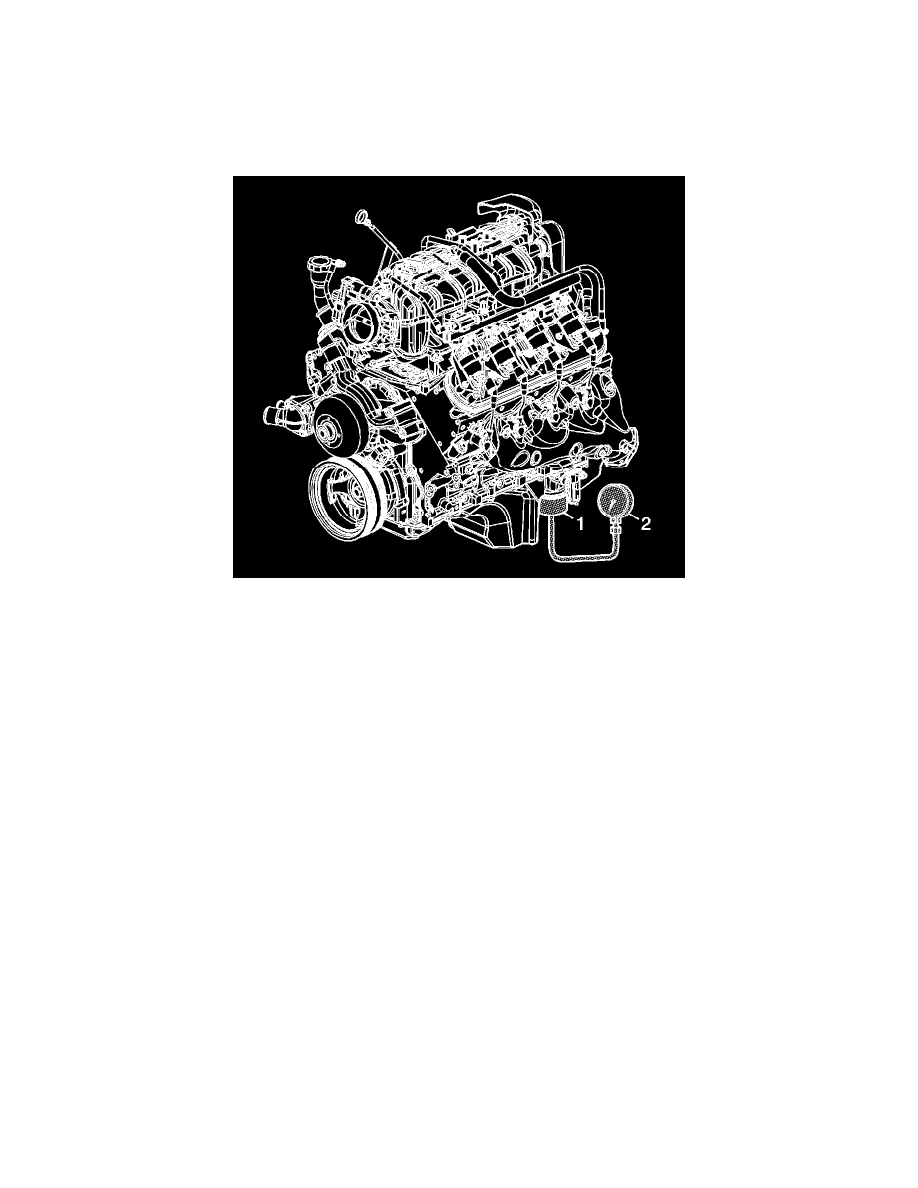Yukon XL 4WD V8-5.3L (2011)

Engine Oil Pressure: Testing and Inspection
Oil Pressure Diagnosis and Testing
Tools Required
*
EN-47971 Oil Pressure Gauge Adapter
*
J 21867 Pressure Gauge
1. With the vehicle on a level surface, run the vehicle for a few minutes. Allow adequate drain down time, 2-3 minutes, and measure the oil level.
2. If required, add the recommended grade engine oil and fill the crankcase until the oil level measures full on the oil level indicator.
3. Run the engine briefly, 10-15 seconds, and verify low or no oil pressure on the vehicle gauge or light.
4. Listen for a noisy valve train or a knocking noise.
5. Inspect for the following conditions:
*
Oil diluted by water or glycol antifreeze
Refer to Coolant in Engine Oil See: Testing and Inspection/Symptom Related Diagnostic Procedures/Coolant in Engine Oil.
*
Foamy oil, which may be caused by a cut or damaged oil pump screen O-ring seal
6. Remove the oil filter and install the EN-47971 (1).
7. Install the J 21867 (2), or equivalent to the EN-47971 (1).
8. Run the engine until the engine reaches normal operating temperature and measure the engine oil pressure.
9. Compare the readings to Engine Mechanical Specifications .
10. If the engine oil pressure is below specifications, inspect the engine for 1 or more of the following conditions:
Note: Engines equipped with an oil pressure sensor, active fuel management and/or variable valve timing can demand more oil pressure, than the
minimum requirements for other mechanical engine components, to operate properly. Verify that the oil pressure sensor is operating correctly. If
the engine oil pressure meets the minimum specifications but there is still an oil pressure concern and/or a MIL is encountered due to DTCs P0011
or P0521, inspect the engine for 1 or more of the following conditions:
*
Valve lifter oil manifold filter plugged or damaged.
Refer to Valve Lifter Oil Manifold Cleaning and Inspection See: Service and Repair/Overhaul/58. Valve Lifter Oil Manifold Cleaning and
Inspection.
*
Improper operation of the active fuel management oil pressure relief valve
Refer to Cylinder Deactivation (Active Fuel Management) Oil Pressure Relief Valve Diagnosis and Testing See: Testing and
Inspection/Component Tests and General Diagnostics/Cylinder Deactivation (Active Fuel Management) Oil Pressure Relief Valve Diagnosis
and Testing.
*
If equipped, check if the engine oil cooler or oil cooler lines are plugged or damaged.
*
Oil pump worn or dirty
Refer to Oil Pump Cleaning and Inspection See: Service and Repair/Overhaul/53. Oil Pump Cleaning and Inspection.
*
Oil pump-to-engine block bolts loose
Refer to Oil Pump, Screen and Crankshaft Oil Deflector Installation See: Service and Repair/Overhaul/72. Oil Pump, Screen and Crankshaft
